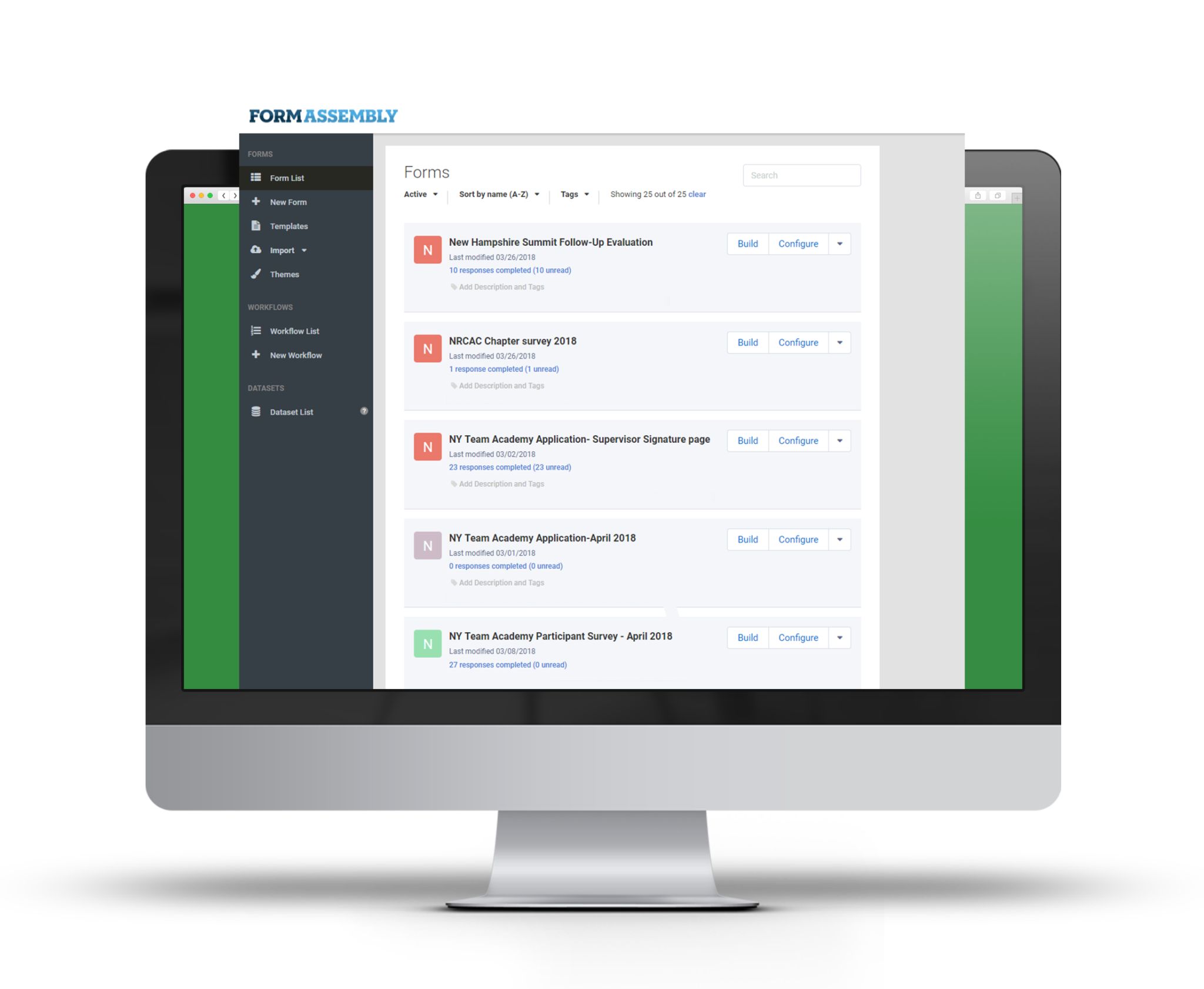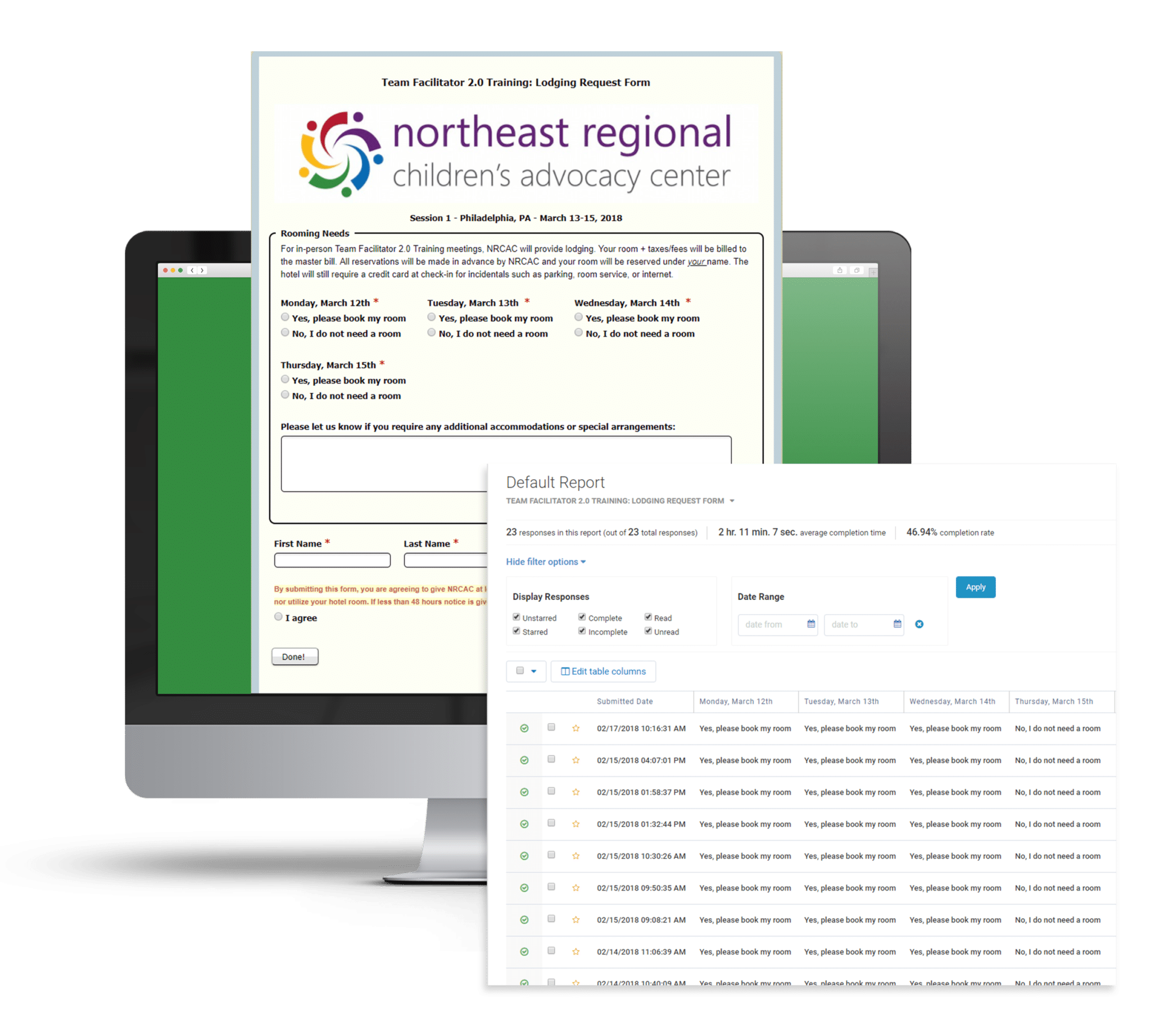

Nonprofit
FormAssembly Guides Online Data Processes for the Northeast Regional Children’s Advocacy Center
The numbers
1-2
hours of data entry saved per training program
16-30
form responses per training program
60%
of old processes moved to online forms
80-90
specialist and technical trainings per year
Use Cases
Recap Evaluations
Post-Event Evaluations Provide Detailed Reporting
After each training, the advocacy center collects feedback from participants. As they work with a wide variety of multi-disciplinary teams including those from human services departments, prosecutors, and legal teams, feedback is critical in maintaining quality information. The center also has multi-level forms in use that serve several purposes: collecting contact information for groups of individuals (such as response teams), individual feedback forms, and supervisor sign-off forms. FormAssembly takes the hassle out of each step by providing one place to submit all of the necessary data.

Forms and Reporting
FormAssembly Provides Improved Internal Documentation
One of the most critical uses for FormAssembly in the organization is the use of forms for training reimbursements and other financial documentation like chapter agreements and budget approvals. These budget and monetary forms allow the group to track important information such as new spending, budget proposals, lodging requests, and travel arrangements. Once the information is submitted to the form, reporting simplifies the review process without the need for separate spreadsheets and tracking.
“FormAssembly allows me to keep all of the ‘money’ pieces together in one form,” Waltimyer said.

Training Applications
Training Applications Update to Salesforce
The NRCAC has trained a total of 2,417 professionals across the region through their sponsored training programs. While some trainings are open, others require applicant information that was previously submitted via paper or email. FormAssembly allows the group to retain this application data online in real-time and to store it directly to Salesforce.

Is FormAssembly the solution to your organization’s diverse data collection needs?
Our VIP group is home to over 300 incredible form builders who find exciting ways to use FormAssembly in everyday life. Learn more about the VIP Program here and email [email protected] to secure your invite!
Don’t just collect data
— leverage it.
